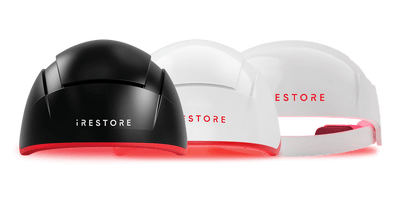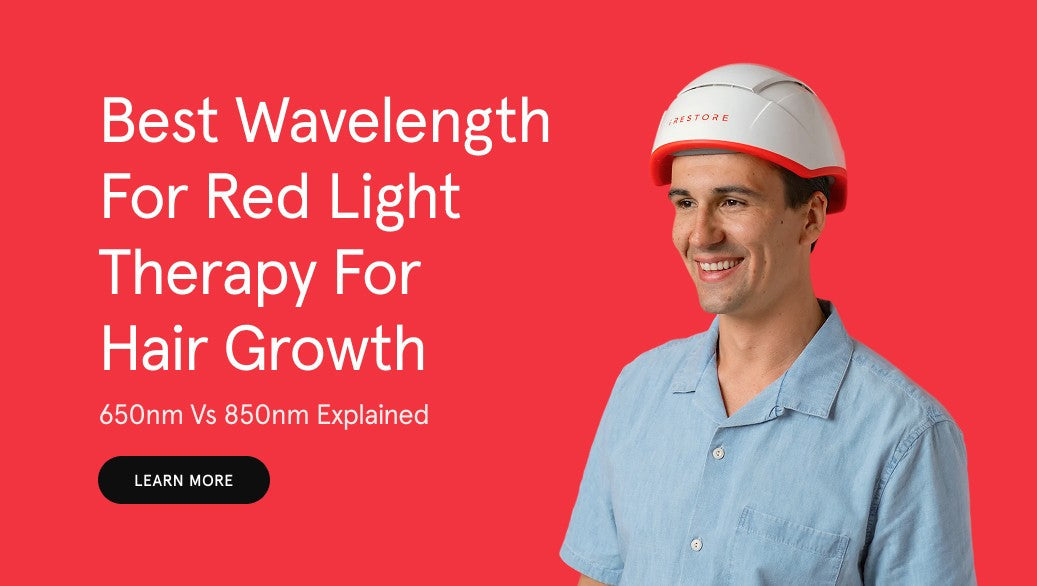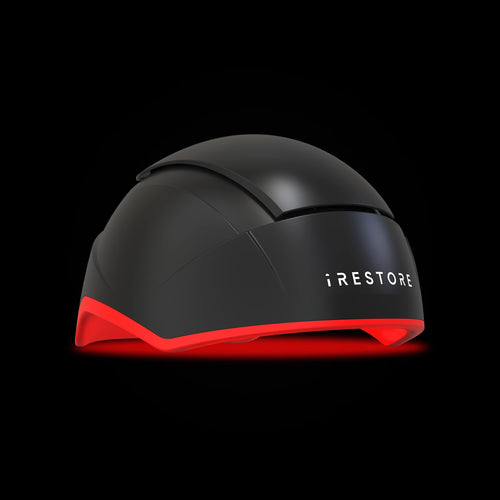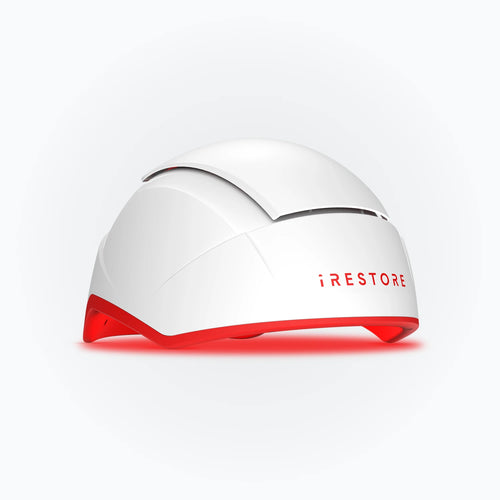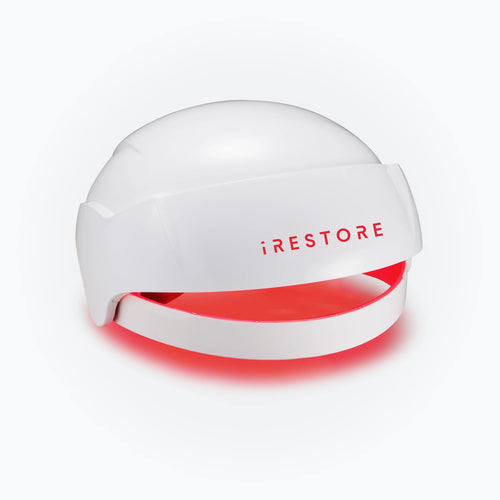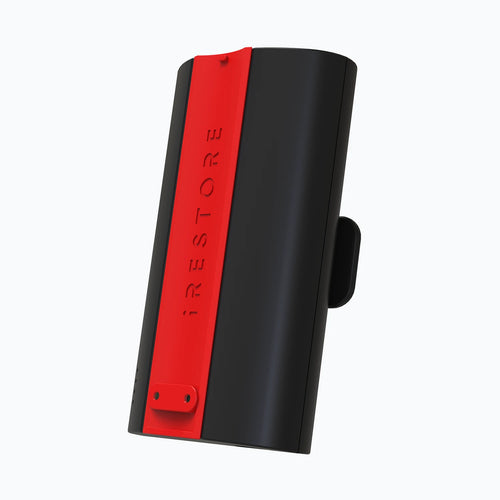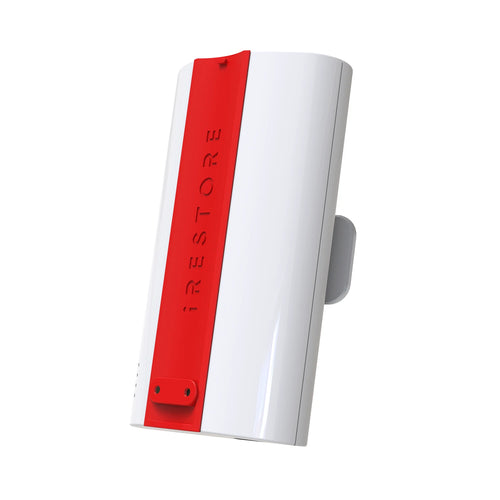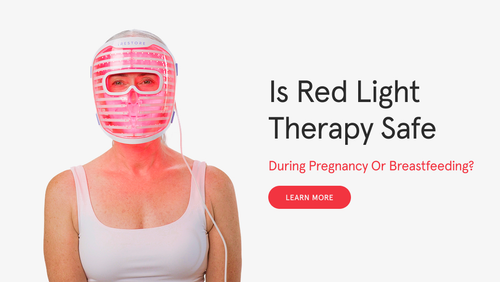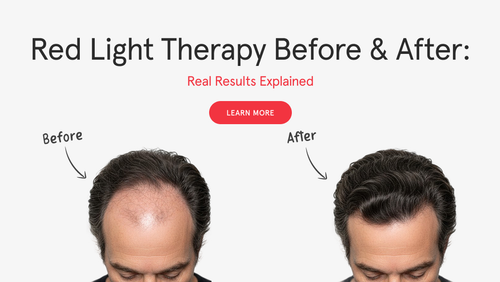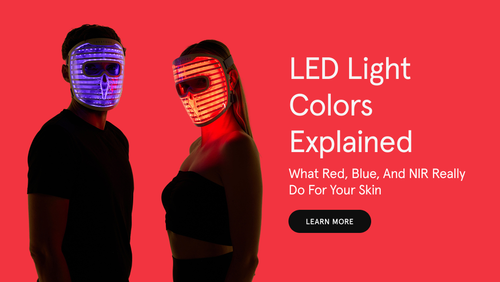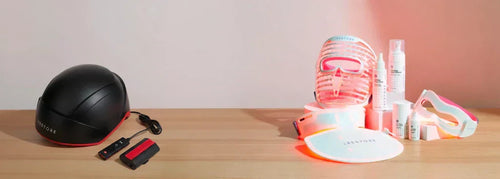Red light therapy has emerged as a revolutionary, non-invasive solution for hair restoration, offering hope to millions experiencing hair loss. With FDA-cleared technology now available, understanding which wavelength delivers the best results for your specific needs becomes crucial. The two most studied wavelengths are 650nm and 850nm, each offer unique benefits for stimulating hair growth, but choosing the right one depends on your hair loss stage and treatment goals. This comprehensive guide explores the science behind each wavelength, helping you make an informed decision for your hair restoration journey. Backed by clinical studies showing measurable results, red light therapy provides a drug-free alternative that naturally stimulates your hair follicles back to life.
What is Red Light Therapy for Hair Growth?
Red light therapy (RLT), also known as low-level laser therapy (LLLT), is a non-surgical, FDA-cleared treatment that stimulates dormant hair follicles using specific wavelengths of light. It enhances blood circulation to the scalp, delivering essential nutrients to hair follicles and boosting cellular energy, which revitalizes weakened hair roots. For more on how red light therapy helps with hair restoration, check out our article on Does Red Light Therapy Help with Scars?.
RLT activates the anagen (growth) phase of the hair cycle, promoting thicker, healthier hair. Clinical studies show an average hair density increase of 43.2%, with 100% of participants experiencing hair growth. This drug-free treatment is safe, gentle, and effective, making it a proven solution for both early thinning and more advanced hair loss.
How Does Red Light Therapy Stimulate Hair Growth?
Red light therapy stimulates hair growth by energizing hair follicles through photobiomodulation. Specific wavelengths of light increase ATP production in follicle cells, reviving dormant follicles and promoting active hair growth.
Improved circulation also plays a key role, as the light dilates blood vessels, boosting nutrient and oxygen delivery to hair roots, while removing waste products that can hinder follicle function. Additionally, RLT reduces inflammation, which is often linked to hair loss.
This process extends the anagen (growth) phase, leading to thicker, healthier hair. Consistent treatment results in improved hair density, shaft diameter, and overall scalp health. RLT provides gentle, non-invasive stimulation, making it an ideal long-term solution for healthy hair growth.
Understanding Red Light Wavelengths (650nm vs 850nm)
650nm (Red Light)
The 650nm wavelength produces visible red light that penetrates 1-2 millimeters into the scalp, effectively stimulating follicles in the upper dermal layers. To learn more about how red light therapy benefits different types of hair loss, refer to How Much Hair Loss is Normal and When to Worry.
It targets follicular keratinocytes and dermal papilla cells, key for hair growth. This wavelength is ideal for early-stage hair thinning or preventive treatment, helping to activate miniaturized follicles and prevent further hair loss. Clinical studies show that 650nm therapy increases hair count and hair shaft diameter, with optimal results after 12-16 weeks of daily 25-30 minute sessions.
850nm (Near-Infrared Light)
The 850nm wavelength penetrates 3-4 millimeters deeper into the scalp, reaching dormant or deeply miniaturized follicles. This deeper penetration stimulates mitochondrial activity, promoting hair growth in areas where surface treatments are ineffective. It is especially beneficial for advanced hair loss, reactivating stubborn follicles that haven't responded to other treatments. Research shows that 850nm light can reactivate previously dormant follicles, offering hope for those with significant thinning or bald spots.
Key Differences Between 650nm and 850nm for Hair Growth
Penetration Depth
The key difference between the 650nm and 850nm wavelengths is their depth of penetration. For further insight on the differences between these wavelengths, explore The Difference Between Laser and LED for Hair Growth.
650nm red light offers surface-level stimulation, focusing on follicles in the upper scalp layers, making it ideal for recently affected or mild thinning areas. On the other hand, 850nm near-infrared light penetrates 3-4 millimeters deeper into the scalp, targeting follicles that have migrated deeper due to miniaturization.
This depth difference impacts treatment effectiveness at different stages of hair loss. 650nm is great for prevention and early intervention, while 850nm becomes crucial for treating more advanced hair loss with deep follicular miniaturization.
Effectiveness in Different Stages of Hair Loss
For mild hair thinning, 650nm is most effective by preventing further miniaturization and encouraging thicker growth from weakening follicles. It helps maintain existing hair density and stimulates growth in early-stage hair loss. Using 650nm early on can prevent progression to more advanced hair loss.
In contrast, 850nm is better for advanced hair thinning and rejuvenating deeply miniaturized follicles. Its deeper penetration allows it to reach follicles that haven’t responded to surface-level treatments, making it ideal for individuals with long-standing hair loss or significant balding areas. 850nm has been shown to reactivate follicles that were previously dormant for months or even years.
Treatment Duration and Intensity
Treatment protocols vary due to the difference in penetration. 650nm typically requires 20-30 minute daily sessions for optimal results, as surface-level stimulation needs frequent treatment to maintain follicular activity.
On the other hand, 850nm may allow for more flexible treatment schedules due to its deeper, longer-lasting effects. Sessions usually last 15-25 minutes, and once initial results are seen, treatment frequency can be reduced to every other day. The deeper tissue effects provide sustained benefits, making it possible to extend the time between sessions while maintaining effectiveness.
Research Supporting 650nm vs 850nm for Hair Growth
Clinical research supports the effectiveness of both 650nm and 850nm wavelengths for hair restoration, each offering distinct benefits. A study in the American Journal of Clinical Dermatology found that 650nm therapy increased hair density by 37% over 16 weeks, with significant improvements in hair count, shaft thickness, and scalp coverage.
850nm near-infrared therapy has shown impressive results for advanced hair loss, with clinical trials revealing that 68% of participants with androgenetic alopecia experienced reactivation of dormant follicles. This wavelength's deeper penetration effectively treats follicles unresponsive to surface-level therapies, offering hope for individuals with established balding.
Comparative studies show 650nm excels in preventing early-stage hair loss progression, while 850nm is more effective at reversing follicle miniaturization. Combined therapy using both wavelengths has resulted in up to a 51% improvement in hair density, demonstrating the benefits of personalized treatment based on hair loss severity and duration.
Recommendations for Effective Use of Red Light Therapy
To maximize results, follow the treatment protocols for your chosen wavelength. For 650nm therapy, use the device for 25-30 minutes daily, positioning it 6-12 inches from your scalp. For 850nm, start with 15-25 minute daily sessions for 12 weeks, then reduce to every-other-day maintenance. Ensure full scalp coverage and clean your scalp before each session.
Combine therapy with a healthy hair care routine. Use sulfate-free shampoos, avoid heat styling, and maintain a diet rich in protein, vitamins, and minerals. Stay hydrated, manage stress, and track progress with consistent photos over 12-16 weeks.
Choosing the Right Wavelength and Device for Your Hair Growth Needs
For Early-Stage Hair Thinning: If you're noticing early signs of thinning or have a family history of hair loss, 650nm is the ideal wavelength. It stimulates follicles just beginning to miniaturize, preventing further deterioration and encouraging thicker growth.
For Advanced Hair Loss: 850nm near-infrared therapy is best for those with established balding or significant thinning. Its deeper penetration reactivates follicles that surface treatments can’t reach, offering the best chance for regrowth in more advanced stages.
How to Assess Your Hair Loss Stage: Early-stage loss typically involves thinning with maintained coverage, while advanced loss shows visible scalp and reduced density. The duration of hair loss can help indicate the appropriate wavelength—recent loss suggests early-stage, while long-term loss calls for deeper treatment.
Choosing the Right Device: Select devices based on coverage area, power output, and wavelength specifications. Laser caps offer hands-free convenience, while handheld devices provide targeted treatment. Ensure the device is FDA-cleared, with sufficient power density and verified wavelength accuracy, and fits comfortably into your routine.
Conclusion
The choice between 650nm and 850nm wavelengths depends on your hair loss stage. 650nm is ideal for early-stage thinning, stimulating follicles and preventing further miniaturization. For advanced hair loss, 850nm provides deeper penetration to reactivate dormant follicles.
With FDA-cleared red light therapy, like the iRESTORE Hair Growth System, you can restore hair fullness without drugs. See visible results in as little as three months by choosing the right wavelength and maintaining consistent treatment.
Stay dedicated to your routine with iRESTORE for thicker, healthier hair and renewed confidence. Experience the benefits of scientifically-backed, non-invasive hair restoration today.
FAQs
Which red light wavelength is best for early-stage hair thinning?
For early-stage thinning, 650nm is most effective. It stimulates follicles that are just beginning to miniaturize, preventing further hair loss and promoting thicker growth.
Which red light wavelength is best for advanced hair loss?
For advanced hair loss, 850nm is ideal as it penetrates deeper into the scalp and can reactivate dormant follicles that surface-level treatments can't reach.
Can I use both 650nm and 850nm wavelengths together?
Yes, combining 650nm and 850nm therapies has shown synergistic effects, resulting in up to a 51% improvement in hair density, especially in cases where both early-stage and advanced hair loss are present.
Disclaimer: The iRESTORE blog is for informational purposes only and is not intended to replace professional medical advice or treatment. Please do not ignore professional guidance because of information you’ve read here. If you have concerns about your hair or skin health, we encourage you to consult a qualified healthcare professional.
